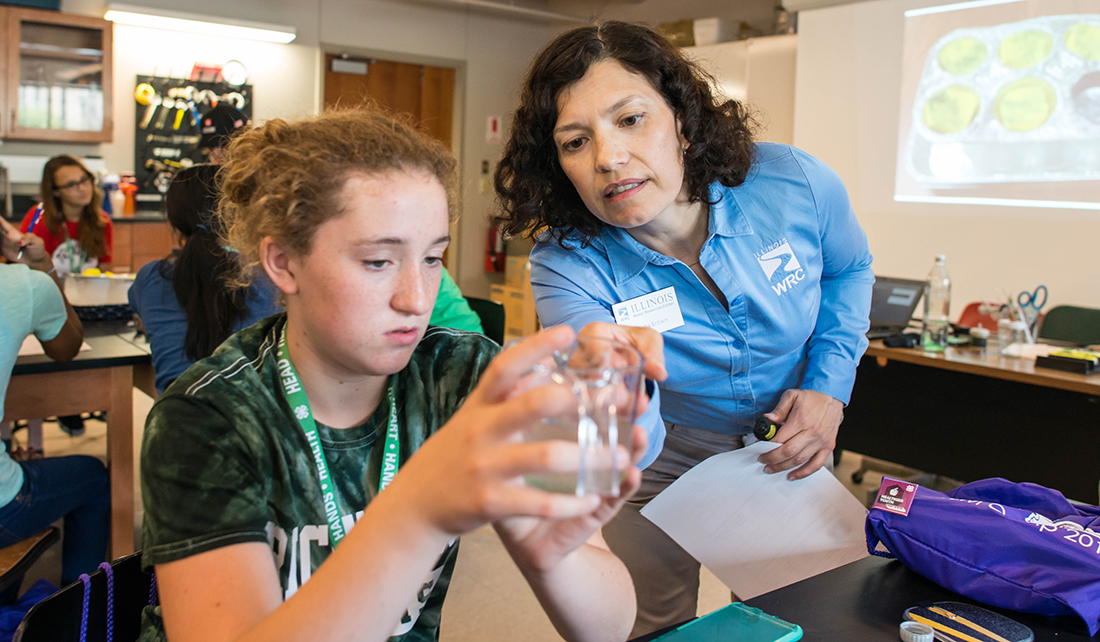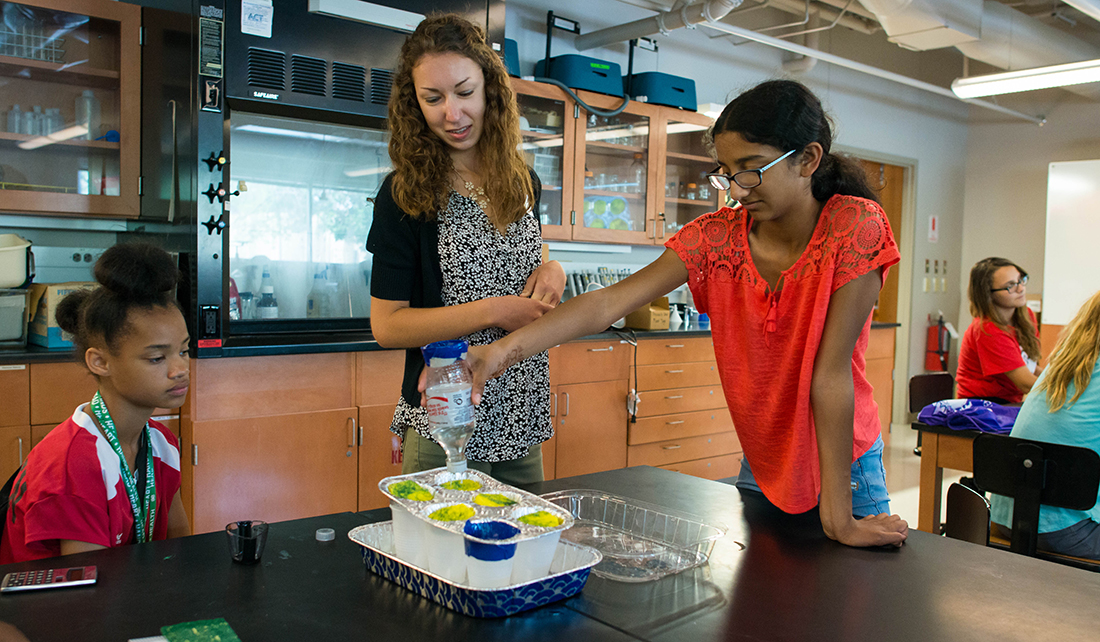
At the start of July, IISG and the Illinois Water Resources Center took part in the annual 4G STEM Camp in Peoria, Illinois. The camp, coordinated by University of Illinois Extension 4-H and Bradley University, introduces seventh- and eighth-grade girls to careers in science, technology, engineering, and math.
The forty participants gladly retreated from the hot sun and humid weather to a Bradley University laboratory to learn about green infrastructure, a water management approach the city of Peoria is relying on to help with its combined sewer overflow (CSO) issues.
“What do you think this area looked like 500 years ago?” asked IISG and Illinois Water Resources Center Stormwater Specialist Eliana Brown who led the workshop.
Hands shot up as the campers described the prairies and forests they imagined once covered the land compared with the homes and businesses that make up the city today.

Tynasia McCalain, 12, acts a “rainmaker” as part of the workshop.
Brown’s point was driven home with the use of an activity that simulates the problems with developing land without providing a way to capture stormwater that otherwise washes into local waterways.
Using water, cups, and sponges as stand-ins for rainstorms, the Illinois River, and the Peoria landscape, the girls were able to draw parallels with the issues that Peoria is facing.
“There are many things happening in Peoria related to the river that engage city employees and landscape designers,” said Judy Schmidt, 4-H metro youth development educator at Illinois Extension and one of the camp’s organizers. “It seemed like a perfect time to engage the girls in discussions about how they are impacted by the quality of the water in the river and how they impact it as well.”

Illinois Water Resources Center intern Ashley Rice, center, helps out the campers with workshop.
Elizabeth Setti, who will be going into seventh grade at Washington Gifted School, came away from the session with a better understanding of the problems and the possible solutions.
“It was really interesting to see how we had new ideas to make the sewage not overflow,” Setti said. “I knew about the rain barrels, but I didn’t know about the rain gardens.”
It will take at least twenty years to come close to solving Peoria’s CSO concerns with green infrastructure, and with the right resources the girls can help with the effort.
“I want to empower them to transform their community and to be that generation that creates the change that has to happen. They have to be the ones to do it,” said Brown.
Illinois-Indiana Sea Grant is a part of University of Illinois Extension and Purdue University Extension.

